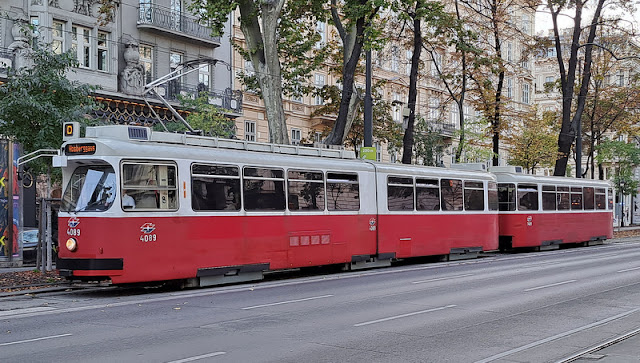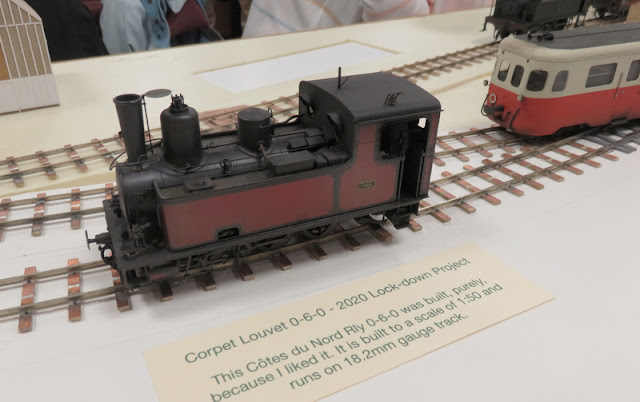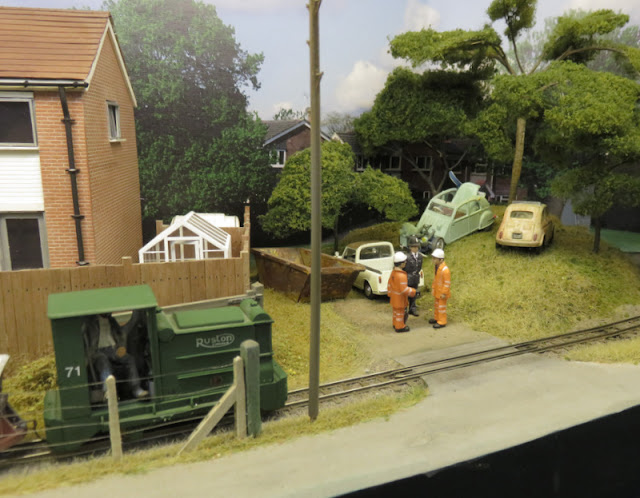Hexworthy was designed to use the same exhibition-friendly fiddle yard I'd made for Awngate, but that is large and not pretty, so for home use a compact fold-away fiddle yard was built with a simple 3-road sector plate. It's seen here before the boards were painted grey. The frame attached to the layout with split hinges front and rear for a rigid joint, and the board rotated around the vertically-mounted flat hinges to stow inverted over the layout.
It worked very well being tucked neatly out of the way when not in use. However, after redecoration and reorganisation of the room the layout is tucked into a 6' space between a wall and a pillar. This means neither the fold-away nor the exhibition fiddle yard fit in the 18-in or so gap.
My solution is a new home fiddle yard fitted around the pillar, which gives me the extra length needed to hold a train.
A sheet of 5mm ply and off-cuts of softwood were assembled into this odd-shaped baseboard. It was a tricky board to make as there's no real datum, most of the side protruding above the board while none of the battens are full depth. The end is 3" by 1", the inner battens 2" by 1", and the thinner diagonal batten will I hope help resist any twist. The curved slot is for the sector plate.
The split hinge alignment and joining method previously used worked well but getting the pin in and out was tricky and involved a pair of pliers, plus it would have required more height to the corners of the board. The club layout has adopted over-centre catches with alignment pins which are really easy to use, so I thought I'd give them a go. I bought packs of each from Station Road Baseboards.

I got what are described as "bullet dowels" which have reasonably tight tolerance while being easy to fit, just needing a hole through the ends. The problem was I realised the ends of Hexworthy are just 3mm ply over 5mm foam-core board, which wouldn't be substantial enough to hold them, so I stuck blocks of softwood behind the foam where the holes would be. The boards were then clamped together, and pilot holes followed by the 7.5mm holes to take the dowels, the locations of the holes being dictated in part by where I could fit the blocks. The dowels then hammer into place, although where the dowels passed through the foam into the blocks I used a sash-clamp as a kind of vice to squeeze it into place, ensuring it didn't tear the foam apart instead.

Fitting the catches was also limited by the existing boards, fortunately there are softwood blocks in the corners of the Hexworthy board but existing screws had to be avoided, and the end fascia panel had to be trimmed to fit around the catch. It would be much easier when building new baseboards to think about the locations of these catches first! Nevertheless, catches were fitted both sides.
You may notice that the dowels and catches are handed, I'll have to adapt the exhibition fiddle yard to use the same attachments and this means only one more dowel set and catch set is needed.
The new arrangement is much easier to connect and release, especially when reaching behind the layout on the shelf unit. The connection is not as rigid as the split hinge, which allowed one end of the layout to be lifted without any bend at the join, but having got the catches as tight as I could it seems good enough and the dowels make for just as good alignment.
Now I need to fit the sector plate and tracks, although it might be a couple of weeks. Next weekend Loctern Quay will be at Uckfield, which looks to be an excellent show as always. Do say hello if you're there.

















































